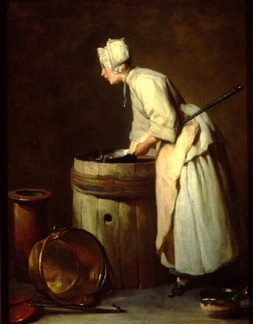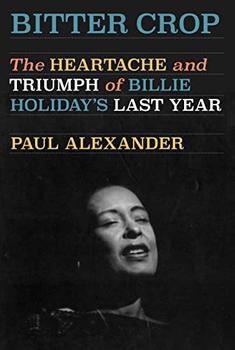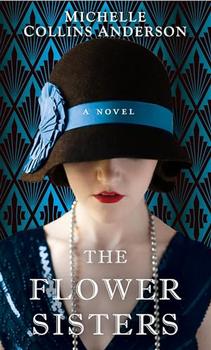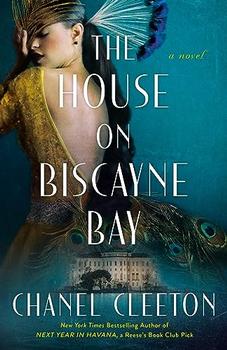Summary | Excerpt | Reading Guide | Reviews | Beyond the Book | Read-Alikes | Genres & Themes | Author Bio
The Classic Kitchen Maid's Memoir That Inspired Upstairs, Downstairs and Downton Abbey

Critics' Opinion:
Readers' Opinion:
First Published:
Jan 2012, 224 pages
Paperback:
Dec 2012, 224 pages
 Book Reviewed by:
Book Reviewed by:
Amy Reading
Buy This Book
This article relates to Below Stairs
In Britain in the early twentieth century, occupational options were few for women. Up until World War I, domestic service constituted the largest single employment for English women, even ahead of factory work. The 1901 census shows that approximately 40.5% of the working adult female population worked in service, to which must be added a significant number of girls, some as young as ten. The profession was wholly unregulated. A typical maid would work 80 hours a week, far more than the 56 hours that a factory worker might put in.
The number of servants a family employed was the key index to their social status, and even middle-class families would have had several, but early in the twentieth century, that began to shift. In 1904, a German architect observed that English middle-class families were complaining of the scarcity of the "£20 maid," one whose annual salary was £20. Women were starting to find employment in shops and offices, and middle-class families were beginning to use new appliances for housework that obviated the cost of servants.
 According to Life Below Stairs by Alison Maloney, there was an undeviating hierarchy to the inside staff of a prosperous family. The butler was the highest-ranking servant who oversaw the entire household. Under him would be the first footman, who would serve meals and accompany the family on outings, followed by any number of other footmen. At the bottom would be the hallboy, a menial worker. The master's valet would report directly to the master, not the butler.
According to Life Below Stairs by Alison Maloney, there was an undeviating hierarchy to the inside staff of a prosperous family. The butler was the highest-ranking servant who oversaw the entire household. Under him would be the first footman, who would serve meals and accompany the family on outings, followed by any number of other footmen. At the bottom would be the hallboy, a menial worker. The master's valet would report directly to the master, not the butler.
The housekeeper was the head of the female staff and worked alongside the butler as an equal but ultimately reported to him. She oversaw the chambermaids, who cleaned the bedrooms, the parlourmaids, who cleaned the public rooms, and the maid-of-all-work. She also oversaw the cook, the undercook, the kitchen maid, and the scullery maid (the kitchen maid's assistant). Like the valet, the ladies' maid was independent of the housekeeper and served at the pleasure of her mistress. If there were children in the household, they would be cared for by a nanny who was likewise independent of the downstairs staff and who might on occasion dine with the master and mistress.
It is commonly perceived that domestic service declined in the 1920s, when Powell's memoir is set. But as social historian Lucy Delap argues, "After a brief dip in numbers during the First World War, the economic depression of the 1920s and 1930s forced more women back into service, aided by hostile government benefits policies which regarded all women as potential servants and, whatever their training and employment history, refused to pay benefits to those who rejected domestic work." Delap further argues in Knowing Their Place that domestic service is a "foundational narrative" about social change and that the now-absent servant continues to exercise a great deal of power in the British cultural imagination.
Click on the video below for a clip of the latest season of Downton Abbey, the popular television drama about aristocratic life and domestic service in 20th century Britain:
Oil painting of a scullery maid by Jean-Simèon Chardin (d. 1779)
Filed under People, Eras & Events
![]() This "beyond the book article" relates to Below Stairs. It originally ran in January 2012 and has been updated for the
December 2012 paperback edition.
Go to magazine.
This "beyond the book article" relates to Below Stairs. It originally ran in January 2012 and has been updated for the
December 2012 paperback edition.
Go to magazine.





The Flower Sisters
by Michelle Collins Anderson
From the new Fannie Flagg of the Ozarks, a richly-woven story of family, forgiveness, and reinvention.

The House on Biscayne Bay
by Chanel Cleeton
As death stalks a gothic mansion in Miami, the lives of two women intertwine as the past and present collide.

The Funeral Cryer by Wenyan Lu
Debut novelist Wenyan Lu brings us this witty yet profound story about one woman's midlife reawakening in contemporary rural China.
Your guide toexceptional books
BookBrowse seeks out and recommends the best in contemporary fiction and nonfiction—books that not only engage and entertain but also deepen our understanding of ourselves and the world around us.